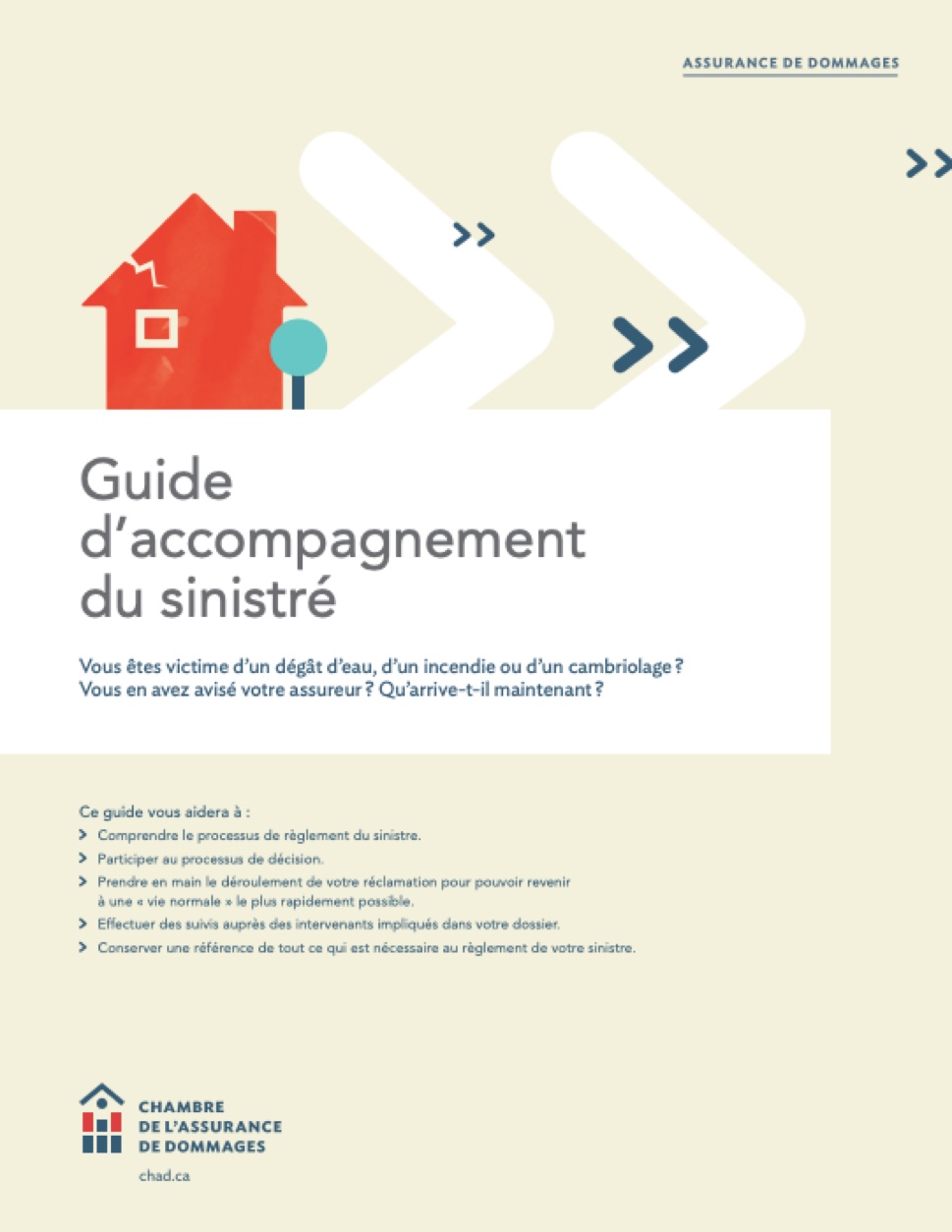Condominium claims
The particularities of the law and insurance contracts are such that claims adjusters must take a different approach to handling a condominium claim file.

The claims adjuster – the certified professional whose practice is overseen by the ChAD, and who takes the claimant through the claims process – is mandated by the insurer to settle your claim. He or she is responsible for investigating the cause of the loss, determining whether the loss is covered by your insurance contract, estimating the damage amount, and negotiating the settlement with you. He or she is your key contact and resource person. Feel free to ask your adjuster any question at all. They are there to keep you informed.
Working together with a claims adjuster will help you get through difficult times. In fact, 72% of claimants confirm that this certified professional made the claims process fast and easy by guiding them through the steps of the claims process and providing them with all the information they needed to understand their file.
The particularities of the law and insurance contracts are such that claims adjusters must take a different approach when handling a condominium claim file. In order to investigate the loss, estimate the damages and negotiate a settlement, they need to ask insureds a number of questions. Here are a few examples.
1. What type of co-ownership (condominium) is it?
Is it a divided or undivided co-ownership? Is it residential, commercial, or mixed-use? Is it a phased co-ownership, which would involve several syndicates and several declarations of co-ownership?
The declaration of co-ownership (the main document required), as well as the insurance contracts, will be needed to begin analyzing the situation. In fact, even if the loss seems to have only affected the contents of a private portion, the claims adjuster will nevertheless have to refer to the declaration of co-ownership since it may contain information on who is responsible for maintaining or repairing the various parts of the building.
The representative of each syndicate of co-ownership involved must provide the adjuster with a copy of each declaration of co-ownership (as well as any possible amendments) to help the adjuster fully understand how the declarations could potentially impact each other.
2. Who is involved in the claims process?
Many different parties may be involved in a condominium claim file: for example, the claimants (co-owners, tenants, and syndicates of co-ownership), the insurers, the directors of the syndicate, and insurance restoration specialists.
For the claims adjuster to be sure she is dealing with the right parties, she will need to know who is duly authorized to represent each syndicate of co-ownership, as well as each of the co-owners who have an interest in the loss.
Often, several claims adjusters are involved in a loss that occurred in a co-ownership. These professionals have an ethical duty to cooperate with each other; however, this cooperation must not harm those who mandated them or the concerned parties. For instance, while a claims adjuster cannot ignore a request made by one of her colleagues, she can answer by saying that her mandate prevents her from responding to the request, if this is the case.
Furthermore, a meeting with all those involved could enable the adjuster to validate that the parties are on the same wavelength with respect to how the claim will proceed and the liability of each stakeholder. This type of meeting also provides an opportunity for differences of opinion to be raised and for claimants to be informed of them quickly.
3. Which insurance contracts apply?
To properly process the insured’s claim file and provide the insured with the explanations needed to understand the claim settlement and the adjuster’s services, the claims adjuster must verify the insurance contracts of the interested parties, in other words, those of the syndicate of co-ownership and the co-owner claimants.
The amount of the deductible and the limit that applies to the loss are also crucial pieces of information for the claims adjuster who must, in addition, validate whether or not any endorsements related to the loss were added to the contract. All of this information will enable the adjuster to determine whether the loss is allowable under the insurance contract, and give this information to the insured as well as any other person having an interest in the compensation.
The person representing the syndicate(s) of co-ownership involved, as well as each co-owner affected by the loss, must therefore provide the claims adjuster with a copy of the various insurance contracts.
4. Are there other relevant documents?
The evaluation of the cost of rebuilding, conducted by an accredited appraiser on behalf of the syndicate, might also include valuable information on the building category, the quality and type of materials used, and other details concerning the building’s construction.
Claims adjusters should also ask for a copy of the description of the private portions or the reference unit in order to identify any improvements the co-owner has made that increase the unit’s value.
Is the affected unit rented? If so, the claims adjuster will need the lease the tenant signed and their home insurance contract. He will also need both the co-owner’s and the syndicate’s insurance contracts.
To analyze the loss, the claims adjuster may also need to inventory the affected property (the building and its contents). If a list of items exists, the adjuster will need to receive a copy. This will facilitate the investigation.

To help claimants better understand the settlement process, and in particular the role of the various stakeholders and the claims adjuster’s responsibility, the Chambre de l’assurance de dommages created the Claimant’s Handbook. Learn more about the role of the claims adjuster [link currently in French only] and about damage insurance.
Learn more about claims adjusters and divided co-ownerships.
The Insurance Bureau of Canada has created a micro-site devoted to questions that insurers of co-owners and syndicates of divided co-ownership raise when settling a claim.
